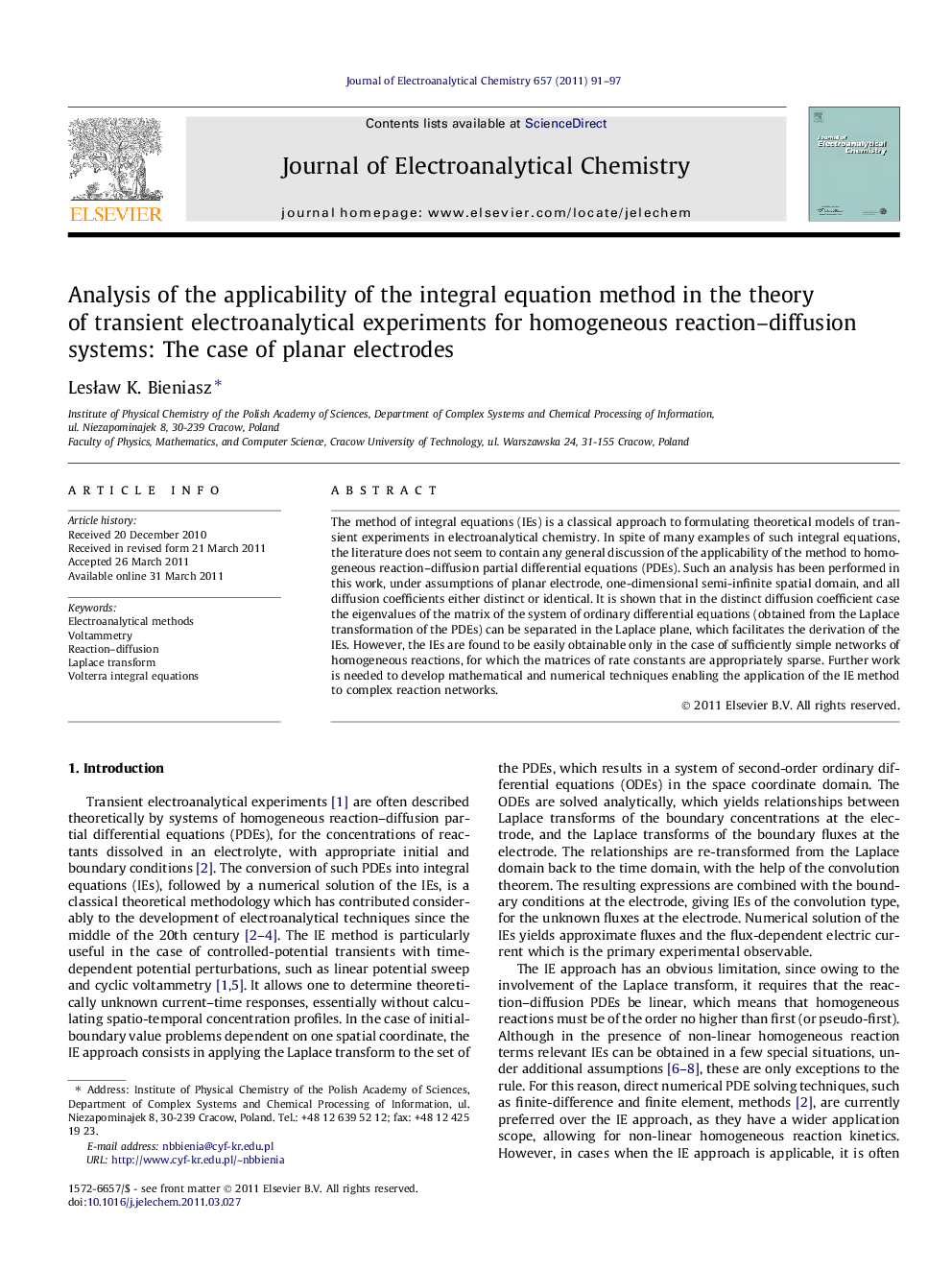| Article ID | Journal | Published Year | Pages | File Type |
|---|---|---|---|---|
| 219528 | Journal of Electroanalytical Chemistry | 2011 | 7 Pages |
The method of integral equations (IEs) is a classical approach to formulating theoretical models of transient experiments in electroanalytical chemistry. In spite of many examples of such integral equations, the literature does not seem to contain any general discussion of the applicability of the method to homogeneous reaction–diffusion partial differential equations (PDEs). Such an analysis has been performed in this work, under assumptions of planar electrode, one-dimensional semi-infinite spatial domain, and all diffusion coefficients either distinct or identical. It is shown that in the distinct diffusion coefficient case the eigenvalues of the matrix of the system of ordinary differential equations (obtained from the Laplace transformation of the PDEs) can be separated in the Laplace plane, which facilitates the derivation of the IEs. However, the IEs are found to be easily obtainable only in the case of sufficiently simple networks of homogeneous reactions, for which the matrices of rate constants are appropriately sparse. Further work is needed to develop mathematical and numerical techniques enabling the application of the IE method to complex reaction networks.
► General analysis of the integral equation formulation of transient kinetic models. ► Applicable to homogeneous reaction–diffusion systems and planar electrodes. ► Integral equations are shown to be easy to obtain for simple reaction networks only. ► Complex reaction networks require advanced mathematical approaches.
